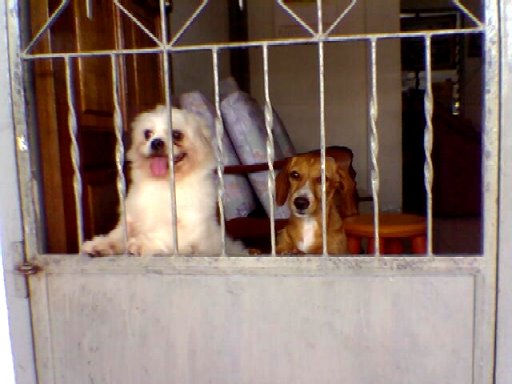Article From SubmitYOURArticle.com: Tips and Guide on How to Train a Deaf Dog
Deafness in dogs is not a widespread condition,
but it does crop up now and again, especially in
certain breeds, such as the Dalmatian, which has
a genetic tendency toward deafness. Perhaps your
new pup happens to be deaf, or perhaps you have
decided to adopt a deaf dog from a shelter. In
either case, you can be sure you are in for a lot
of work.
Deafness, with all its hardship, can be sometimes
seen as a blessing for a dog owner, as
unfortunate as that sounds. A deaf dog will not
hear all the other neighborhood dogs barking and
so will not join in. The same goes for the sound
of your neighbors coming home late, a raging
thunderstorm or other sounds that might set off
an excited dog.
Of course deafness also comes with its
difficulties. Your deaf dog might not be able to
sense danger such as an approaching car. A deaf
dog is not going to be a good guard dog for
obvious reason. Easily the greatest difficulty
accompanying canine deafness is training. So
much dog training is done by speaking. How then
does a dog owner train a deaf dog?
Before we go any further, it is important to
realize that not all deafness is permanent. It
may be wise to first take your dog to see a
veterinarian. Certain scenarios such as a ear
infection, foreign objects lodged in the ear,
sometimes medication can cause temporally
deafness in dogs.
If your dog is indeed permanently deaf, don't
give up hope quite yet. If you are observant,
you would realize that a professional dog trainer
usually use hand signals together with vocal
commands. Some trainers will not use vocal
commands at all, instead using only hand and body
signals. The reason why this works is because
dogs are sensitive to movements, be it hand
signal or body language. They also communicate
with other dogs using body language. The
position of a dog's tail, head, body, and tail
can reveal a lot about how a dog is feeling or
thinking.
Firstly, decide what hand signals to use and what
commands they represent. Consistency is the most
important factor. Nothing could set back training
more than to confuse your dog by either using the
same signal for two commands, or using different
signals for the same command.
Hand signals should be very clear and obvious.
Signals such as a raised hand (in the "stop"
position) or a fist are of the best kind, whereas
signals with only slight variations (two fingers
up and three fingers up) can be very confusing.
Once you have decided on your signals, you can
commence with the training. This is done exactly
as you would train a hearing dog. Carry treats
with you to give as rewards each time your dog
performs the correct action. Remember that using
negative reinforcement (punishing a dog for doing
the wrong thing) often confuses a dog and doesn't
aid in training. If your deaf dog is still a
young pup, consider using his food as treats such
that each time he does the correct thing, he gets
fed.
Remember to be patient. Your dog will eventually
get the gist of your hand signals and may even
respond better to them than another dog might to
vocal commands. Many find it challenging to
praise their dogs when they do the right thing.
The easiest way to praise a deaf dog would be to
use treats as reward.
If you run out of treats, giving your dog a huge
smile follow up with a good rub is also
effective. You may also consider choosing another
hand signal such as clapping to sign that you are
pleased with your dog.
----------------------------------------------------
Do you know that a body harnesses actually
encourage your dog to pull? That is because the
pressure points on a harness cause your dog to
response by pulling forward. To learn more about
canine dog health and canine dog care:
http://www.caninetouch.com/category/health/
http://www.caninetouch.com/category/dog-care/
EasyPublish this article: http://submityourarticle.com/articles/easypublish.php?art_id=122918














.jpg)






.jpg)

0 comments:
Post a Comment